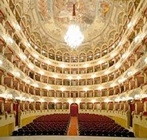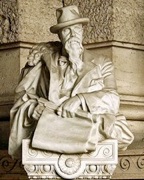
Bust (ca. 1910) of Guglielmo Calderini
Palazzo di Giustizia, Rome
Guglielmo Calderini, who was born in Perugia, studied architecture at the Accademia di Belle Arti, where he formed friendships with Raffaele Angeletti and Francesco Biscarini, the founders of the Fornace Angeletti-Biscarini (below). He then studied in Turin (the capital of the newly-united Italy) and Rome.
Guglielmo Calderini was a militant supporter of the Italian Risorgimento. He had an ideological affinity with the culture of post-unification Italy and developed an architectural style that was designed to meet the needs of the emerging middle class. He prospered professionally in the period of rapid urban development that followed unification.
Guglielmo Calderini was active in his native city, where he held to post of Professor of Architecture and History of Art in the Accademia di Belle Arti in 1868-2. Via Calderini (Walk IV) is named for him. He also established a reputation throughout Italy. His most important work was probably the design of the Palazzo di Giustizia, Rome (1888-1910).
Perugia
Palazzo Gnoni-Mavarelli (1860-2)
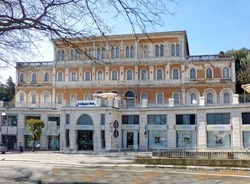
The Cassa di Risparmio commissioned this building from Guglielmo Calderini on land released by the demolition of part of Rocca Paolina. It was designed to house the public baths but it subsequently proved to be impossible to supply it with adequate water.
Giacomo Brufani bought the building in 1874 and opened a hotel here, in which Richard Wagner stayed in 1880. Brufani sold the palace in 1883, when he opened Hotel Brufani nearby (see Walk VII). It subsequently passed to the Gnoni-Mavarelli family, and became known as Palazzo Gnoni-Mavarelli.
The palace now houses Hotel Iris.
Palazzo Calderini (1871)
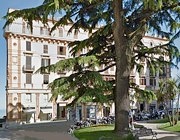
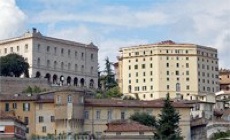
Facade in Piazza d’ Italia Semi-circular back of the palace, with
Palazzo della Provincia to the left
and Palazzo della Penna below
Guglielmo Calderini built this palace (Palazzo Calderini) on the semi-circular foundations established by Cardinal Rivarola in his remodelling of what was then Piazza Rivarola in 1800-8. The terracotta reliefs on the facade came from Fornace Angeletti-Biscarini. The palace was the first condominium in Perugia.
Politeama Calderini (1871)
Guglielmo Calderini built this enormous structure to house public spectacles. Unfortunately, it had to be pulled down almost immediately due to structural problems. (Nazarene Biscarini subsequently built the Palazzine Biscarini (1894) on the site).
Palazzo Bianchi (1873-6)
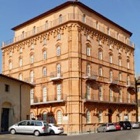
San Costanzo (1882-90)

Palazzo Cesaroni (1897)
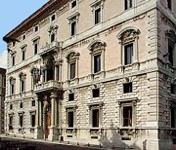
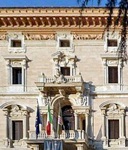
Palazzo Cesaroni was built for Ferdinando Cesaroni by Guglielmo Calderini. Houses on this site that had belonged to the Monaldi family had been demolished in ca. 1540 to make way for Rocca Paolina. The palace was never occupied by the Cesaroni family. It served as the Palace Hotel until 1925, when it was bought by an insurance company. It passed to the state in the 1970s and now houses the Consiglio Regionale dell' Umbria.
The terracotta frieze of putti under the cornice under the roof came from Fornace Angeletti-Biscarini.
Remodelling of Teatro Morlacchi (1874)
Memorial (1909)
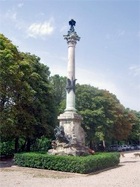
Città di Castello
Terme di Fontecchio (1868)
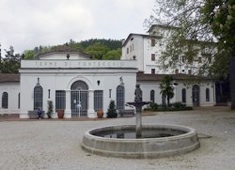
The earlier baths on this site some 3 km from Città di Castello was destroyed by an earthquake in 1789. Excavations here in 1868 unearthed evidence of a Roman spa that might have been the one enjoyed by Pliny the Younger and his wife, Calpurnia. The Commune commissioned Guglielmo Calderini to design the current Terme di Fontecchio, which was restored and remodelled in 1949.
The nearby Fonte dei Cappuccini also forms part of the modern complex. The original Capuchin convent here now serves as a guest house.
Statue of Giuseppe Garibaldi (1887)

Nocera Umbra
College (1879)
Guglielmo Calderini designed this college and directed the construction project.
Return to Art in: Città di Castello Perugia Nocera Umbra.


